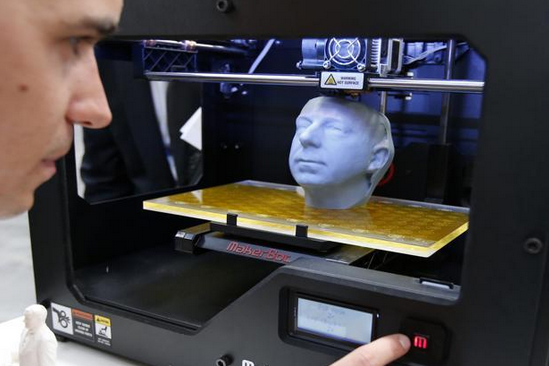3D Print Technology: Seahorse Tails Made With 3D To Help In Increasing Robotic Flexibility
| Vinay Patel | | Jul 06, 2015 12:14 AM EDT |
(Photo : Reuters) The newly developed 3D tails of the seahorse have shown a remarkable advantage of flexibility that is inspiring scientists to update the robotic technology to give more flexibility ,as well as body armors to the existing models.
The newly developed 3D tails of the seahorse have shown a remarkable advantage of flexibility that is inspiring scientists to update the robotic technology to give more flexibility ,as well as body armors to the existing models.
According to The Next Digit, the new 3D tail models of seahorses have shown unique advantages which include flexibility that has the potential to improve the robotic technology as well. As per the report, this flexibility can help scientists develop robots that could aid in rescue operations simply because of their improved body movements.
Like Us on Facebook
Currently, it is being speculated that this new technology can be used to develop robots performing surgeries, rescue operations and working in other areas of applications as well. Another report on 3D print points out that scientists seemed to be extremely inspired by the unique anatomy of a sea horse tail. Thanks to this unique anatomy, a seahorse is able to twists its tail in several unexpected ways and uses it as a balancing organ. The core purpose of developing and analysing the 3D models of these tails was to understand the root cause of this flexibility in the seahorse and implement it in robotic technology as well.
Scientists are keen on studying the ways of the seahorse to improve the existing robotic technology. They have also expressed interest to use these techniques in developing devices with better mobility as well as efficiency. The first appearance of a seahorse can rarely impress any layman, thanks to its tiny structure. However, there are several interesting facts about these tiny creatures. For instance the male seahorse even though tiny carries up to 1500 embryos at one time which is quite a feat for the small body.
The 3D study of the seahorse tail was performed by a team of researchers under the leadership of Michael Porter, an engineering professor at the Clempton University. The 3D experiments also included twisting, squeezing and even crushing the tail of the tiny mammal. The brutality actually helped the scientist understand what allows the tail to tolerate such high levels of stress.
Tags3D technology, 3D news, 3d virtual reality, latest discovery
©2015 Chinatopix All rights reserved. Do not reproduce without permission
EDITOR'S PICKS
-

Did the Trump administration just announce plans for a trade war with ‘hostile’ China and Russia?
-

US Senate passes Taiwan travel bill slammed by China
-

As Yan Sihong’s family grieves, here are other Chinese students who went missing abroad. Some have never been found
-

Beijing blasts Western critics who ‘smear China’ with the term sharp power
-

China Envoy Seeks to Defuse Tensions With U.S. as a Trade War Brews
-

Singapore's Deputy PM Provides Bitcoin Vote of Confidence Amid China's Blanket Bans
-

China warns investors over risks in overseas virtual currency trading
-

Chinese government most trustworthy: survey
-

Kashima Antlers On Course For Back-To-Back Titles
MOST POPULAR
LATEST NEWS
Zhou Yongkang: China's Former Security Chief Sentenced to Life in Prison

China's former Chief of the Ministry of Public Security, Zhou Yongkang, has been given a life sentence after he was found guilty of abusing his office, bribery and deliberately ... Full Article
TRENDING STORY

China Pork Prices Expected to Stabilize As The Supplies Recover

Elephone P9000 Smartphone is now on Sale on Amazon India

There's a Big Chance Cliffhangers Won't Still Be Resolved When Grey's Anatomy Season 13 Returns

Supreme Court Ruled on Samsung vs Apple Dispute for Patent Infringement

Microsoft Surface Pro 5 Rumors and Release Date: What is the Latest?










